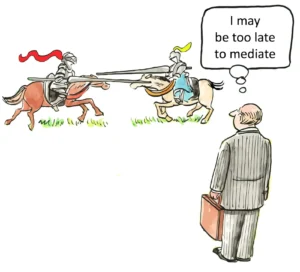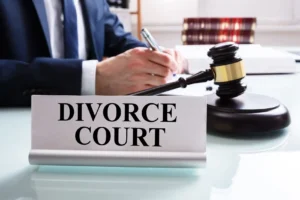Whiplash Claims: Proving Soft Tissue Injuries After an Accident
Whiplash injuries are among the most common types of injuries sustained in motor vehicle accidents, particularly in rear-end collisions. These soft tissue injuries affecting the neck and upper back can cause significant pain and impairment, yet they often present unique challenges when it comes to proving their existence and severity in legal claims. This article examines the complexities of establishing whiplash injuries in personal injury cases and provides guidance on effectively documenting and presenting evidence to support such claims.
The nature of whiplash injuries makes them particularly difficult to prove in legal proceedings. Unlike fractures or other structural damage that can be easily visualized on X-rays or other imaging studies, whiplash primarily affects soft tissues such as muscles, ligaments, and tendons. These injuries may not be immediately apparent and can develop or worsen over time. Additionally, the subjective nature of pain and the potential for pre-existing conditions can complicate the process of linking the injury directly to the accident in question.
Despite these challenges, there are several strategies that claimants and their legal representatives can employ to build a strong case for whiplash injuries. The key lies in thorough documentation, consistent medical care, and the strategic use of expert testimony. By understanding the legal and medical aspects of whiplash claims, individuals can better navigate the complexities of the legal system and increase their chances of receiving fair compensation for their injuries.
One of the first and most crucial steps in proving a whiplash injury is seeking immediate medical attention following an accident. This serves two important purposes: first, it ensures that the injury is properly diagnosed and treated, potentially mitigating long-term health consequences; second, it creates a clear and timely record linking the injury to the accident. Emergency room records, ambulance reports, and initial physician evaluations can all serve as valuable evidence in establishing the onset of symptoms immediately following the incident.
It is essential for individuals who suspect they may have suffered a whiplash injury to be thorough and specific when describing their symptoms to medical professionals. Common symptoms of whiplash include neck pain and stiffness, headaches, shoulder pain, and dizziness. Less obvious symptoms such as fatigue, difficulty concentrating, and changes in sleep patterns should also be reported, as these can be indicative of the broader impact of the injury on daily life. Accurate and detailed symptom reporting helps create a comprehensive medical record that can later support the injury claim.
Following the initial medical evaluation, consistent follow-up care is crucial both for recovery and for building a strong legal case. Regular appointments with primary care physicians, chiropractors, physical therapists, or other specialists create an ongoing record of the injury’s progression and the treatment required. This documentation can help demonstrate the severity and duration of the injury, countering potential arguments that the condition was minor or short-lived.
Medical records form the backbone of any whiplash injury claim. These records should include detailed notes from each healthcare provider visited, including diagnoses, treatment plans, and observations about the patient’s condition and progress. Diagnostic imaging studies, while they may not always show soft tissue damage directly, can be useful in ruling out other injuries and supporting the overall diagnosis. MRIs or CT scans may sometimes reveal subtle changes in soft tissues that can corroborate the whiplash diagnosis.
In addition to traditional medical records, claimants should consider keeping a personal injury journal documenting their symptoms, limitations, and the impact of the injury on their daily lives. This contemporaneous account can provide valuable context to the medical records and help illustrate the full extent of the injury’s effects. Noting missed work days, inability to perform household tasks, or restrictions on recreational activities can paint a vivid picture of how the whiplash injury has affected the individual’s quality of life.
The role of expert testimony in whiplash cases cannot be overstated. Medical experts, particularly those specializing in orthopedics, neurology, or physical medicine and rehabilitation, can provide critical insights into the nature and extent of the injury. These experts can explain complex medical concepts in terms that judges and juries can understand, bridging the gap between clinical findings and legal standards of proof. They can also offer opinions on causation, helping to establish the link between the accident and the resulting injury.
In some cases, biomechanical experts may be called upon to provide testimony about the forces involved in the accident and how they likely affected the human body. This type of expert analysis can be particularly useful in cases where the visible damage to vehicles was minimal, helping to explain how significant soft tissue injuries can occur even in low-speed collisions. Biomechanical testimony can lend scientific credibility to the claim, countering skepticism about the severity of injuries in accidents that may appear minor at first glance.
One of the challenges in proving whiplash injuries is addressing the issue of pre-existing conditions. Insurance companies and defense attorneys often argue that symptoms are attributable to degenerative changes or prior injuries rather than the accident in question. To counter these arguments, it is important to obtain and present medical records from before the accident, demonstrating the individual’s prior health status. If there were pre-existing conditions, expert testimony can help explain how the accident exacerbated these conditions or caused new, distinct injuries.
The concept of aggravation of pre-existing conditions is an important legal principle in personal injury cases. Even if an individual had underlying degenerative changes in their spine, for example, they may still be entitled to compensation if the accident worsened their condition or caused it to become symptomatic. Medical experts can play a crucial role in differentiating between the effects of pre-existing conditions and those directly attributable to the accident.
In addition to medical evidence, photographic and video documentation can be powerful tools in supporting whiplash claims. Photos of the accident scene, including damage to vehicles, can help reconstruct the events and demonstrate the forces involved. In some cases, traffic camera footage or dashcam recordings may be available, providing direct visual evidence of the collision. Photos documenting visible injuries, such as bruising or swelling, can also be useful, even if they don’t directly show the internal soft tissue damage.
The testimony of eyewitnesses can provide valuable corroboration of the circumstances surrounding the accident. Witnesses may be able to describe the speed and direction of the vehicles involved, the force of the impact, and the immediate aftermath of the collision. This testimony can help establish liability and support the plausibility of the claimed injuries. In some cases, witnesses may also be able to describe the claimant’s apparent condition immediately following the accident, such as signs of discomfort or limited mobility.
One aspect of whiplash claims that is often overlooked is the potential for long-term or chronic effects. While many whiplash injuries resolve within a few months, some individuals experience persistent symptoms that can last for years or even become permanent. Documenting the ongoing nature of symptoms and the need for continued treatment is crucial in these cases. Long-term prognosis opinions from medical experts can help justify claims for future medical expenses and ongoing pain and suffering.
The psychological impact of whiplash injuries should not be underestimated. Chronic pain can lead to depression, anxiety, and other mental health issues. In some cases, individuals may develop post-traumatic stress disorder (PTSD) related to the accident. Including mental health evaluations and treatment records as part of the overall claim can provide a more complete picture of the injury’s impact on the individual’s life.
When it comes to quantifying damages in whiplash cases, several factors come into play. Economic damages, such as medical expenses and lost wages, are typically straightforward to calculate based on bills and employment records. Non-economic damages, including pain and suffering, loss of enjoyment of life, and emotional distress, are more subjective and can be more challenging to prove. Expert testimony, along with detailed documentation of the injury’s impact on daily activities, can help support claims for these less tangible damages.
In some jurisdictions, the use of pain and suffering calculators or multipliers is common in estimating non-economic damages. These methods typically involve multiplying the economic damages by a factor based on the severity and duration of the injury. However, it’s important to note that these are guidelines rather than hard and fast rules, and the specific circumstances of each case will ultimately determine the appropriate compensation.
The legal landscape surrounding whiplash claims has evolved in recent years, with some jurisdictions implementing reforms aimed at curbing perceived abuses of the system. For example, some states have introduced damage caps that limit the amount of compensation that can be awarded for non-economic damages in personal injury cases. Others have implemented more stringent requirements for medical evidence or expert testimony. Understanding the specific legal requirements and limitations in the relevant jurisdiction is crucial for building a successful whiplash claim.
One trend in personal injury law that has implications for whiplash cases is the increasing use of alternative dispute resolution methods, such as mediation and arbitration. These processes can offer a more efficient and cost-effective way to resolve claims compared to traditional litigation. In mediation, a neutral third party facilitates negotiations between the parties to reach a mutually acceptable settlement. Arbitration involves presenting the case to an impartial arbitrator who makes a binding decision. These methods can be particularly useful in whiplash cases, where the subjective nature of the injuries can make courtroom litigation more unpredictable.
The role of technology in documenting and proving whiplash injuries is an area of growing interest. Wearable devices that track movement and physical activity can provide objective data on a claimant’s limitations and recovery progress. Some medical facilities are exploring the use of virtual reality systems to assess and document range of motion restrictions in whiplash patients. As these technologies become more widespread and accepted, they may offer new avenues for objectively demonstrating the effects of soft tissue injuries.
Insurance companies often employ various tactics to minimize or deny whiplash claims. One common strategy is to argue that the forces involved in the accident were insufficient to cause significant injury, particularly in low-speed collisions. To counter this, claimants may need to present evidence from accident reconstruction experts or biomechanical engineers who can explain how even relatively minor impacts can result in whiplash injuries. Understanding and anticipating these defense strategies is crucial for building a robust claim.
The timing of settlement negotiations in whiplash cases requires careful consideration. While there may be pressure to settle quickly, it’s often advisable to wait until the full extent of the injury and its long-term implications are clear. This may involve reaching a point of maximum medical improvement (MMI), where the treating physicians determine that the condition is unlikely to improve further with additional treatment. Settling too early runs the risk of underestimating future medical needs or ongoing disability.
In cases where liability is clear and the injuries are well-documented, pre-litigation settlement negotiations can be an effective way to resolve whiplash claims. This involves presenting a comprehensive demand package to the insurance company, including all medical records, expert opinions, and a detailed calculation of damages. Skilled negotiation at this stage can often lead to a fair settlement without the need for formal litigation, saving time and resources for all parties involved.
If pre-litigation negotiations are unsuccessful, filing a lawsuit may be necessary to pursue fair compensation. The litigation process involves several stages, including discovery, where both sides exchange information and evidence related to the case. Depositions of medical experts, accident witnesses, and the parties involved can provide crucial testimony to support or challenge the whiplash claim. The prospect of going to trial can often motivate insurance companies to offer more reasonable settlements, as they weigh the costs and risks of litigation against the potential for a larger jury award.
The statute of limitations is a critical consideration in whiplash cases. These laws set a time limit within which a lawsuit must be filed, typically ranging from one to three years from the date of the accident, depending on the jurisdiction. Failing to file within this timeframe can result in the loss of the right to seek compensation. It’s important to be aware that the statute of limitations may be different for claims against government entities, which often have shorter notice requirements.
In some cases, whiplash injuries may be part of a larger personal injury protection (PIP) or no-fault insurance claim. These systems, which exist in some states, are designed to provide quick payment for medical expenses and lost wages regardless of who was at fault for the accident. Understanding how these systems interact with traditional tort claims is important for maximizing overall compensation and navigating the complexities of insurance coverage.
The concept of comparative negligence can come into play in whiplash cases, particularly in multi-vehicle accidents or situations where the injured party may have contributed to the collision. Under comparative negligence rules, compensation may be reduced by the percentage of fault attributed to the claimant. Presenting evidence to minimize any allegations of contributory negligence is an important aspect of building a strong whiplash claim.
In conclusion, proving whiplash injuries in legal claims requires a comprehensive approach that combines thorough medical documentation, expert testimony, and strategic legal argumentation. While these soft tissue injuries present unique challenges in terms of objective verification, a well-prepared case can effectively demonstrate the reality and impact of whiplash to insurance adjusters, mediators, or juries. By understanding the complexities involved and employing the strategies outlined in this article, individuals suffering from whiplash injuries can improve their chances of receiving fair compensation for their pain, suffering, and related expenses.
Website citations used for this article:
- https://www.forthepeople.com/blog/whiplash-causes-symptoms-and-your-legal-options/
- https://www.mcnicholaslaw.com/whiplash-injuries-after-car-accidents/
- https://thesuperlawyer.com/medical-evidence-for-whiplash-injury-claim/
- https://www.gov.uk/government/calls-for-evidence/statutory-review-of-the-whiplash-tariff/statutory-review-of-the-whiplash-tariff-call-for-evidence
- https://www.straccilaw.com/blog/soft-tissue-injuries-after-a-car-accident
- https://rodenlaw.com/blog/supporting-a-whiplash-claim/
- https://www.allinjurieslawfirm.com/blog/medical-evidence-for-successful-whiplash-injury-claims-in-port-charlotte
- https://www.nolo.com/legal-encyclopedia/whiplash-injuries-basics-32286.html
- https://www.shirvanianlawfirm.com/auto-accident/guide-whiplash-car-accidents-california/













